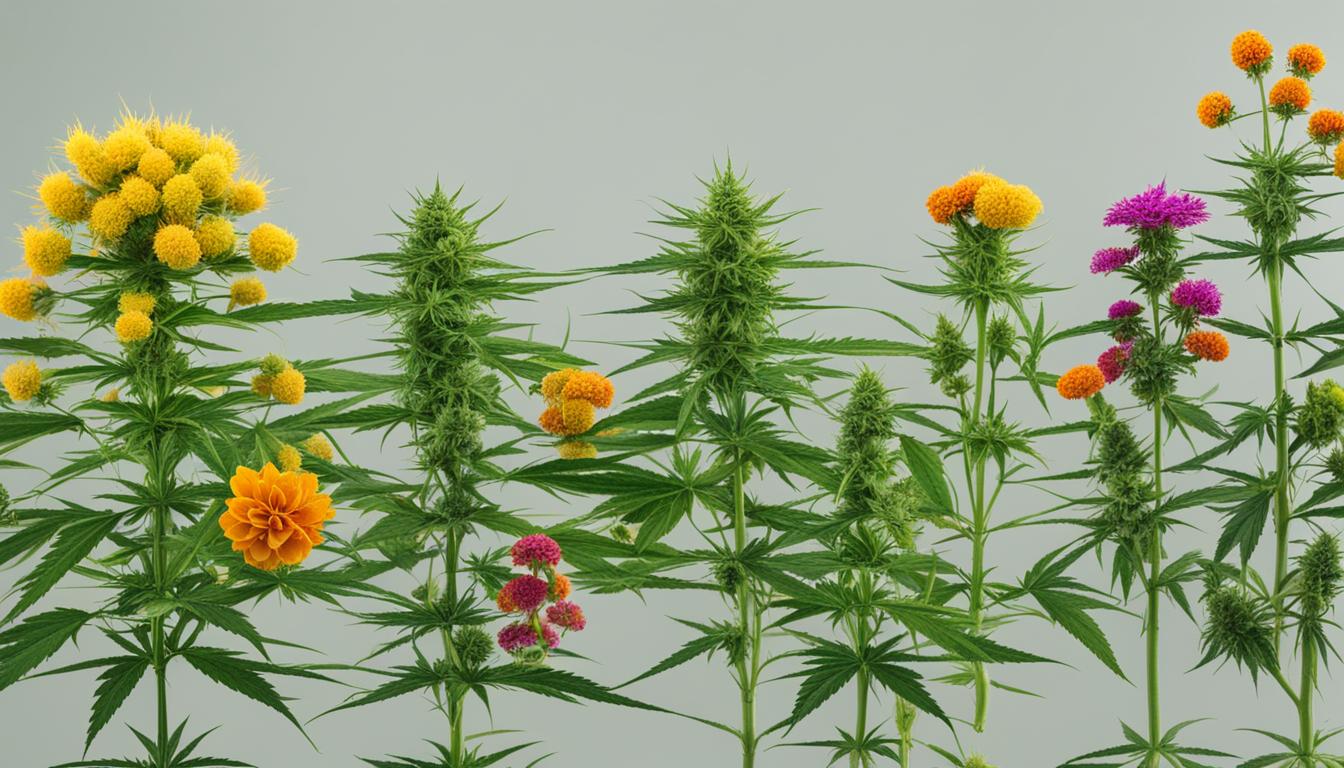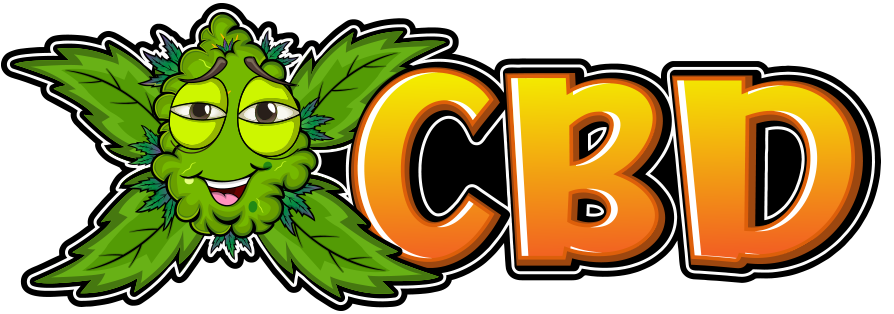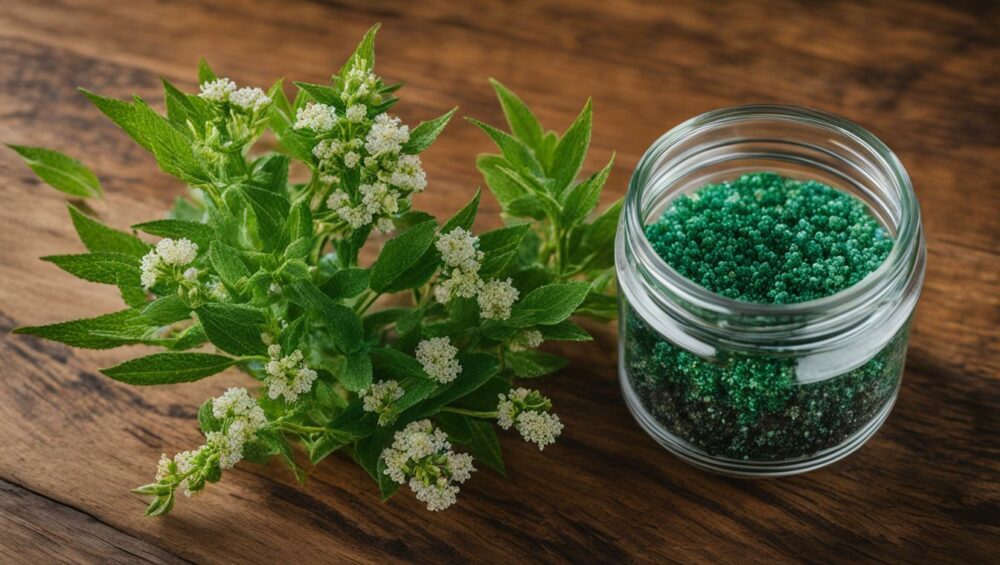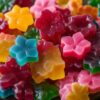Are you curious about the differences between CBD flower and weed? Look no further! In this article, we’ll explore the contrasting characteristics of these two cannabis products and uncover their unique effects.
While CBD flower and weed may appear similar at first glance, their dissimilarities lie within their cannabinoid content and resulting effects. CBD flower, derived from female hemp plants, is abundant in cannabidiol (CBD) and contains minimal levels of tetrahydrocannabinol (THC). On the other hand, weed, commonly known as marijuana, boasts higher levels of THC and lower levels of CBD.
The disparity in cannabinoid content paves the way for distinct experiences when consuming CBD flower or weed. CBD flower provides calming and relaxing effects, offering relief from anxiety and even showing potential in addressing depression. Its sedative properties can induce a better night’s sleep, making it a popular choice for those seeking tranquility and pain management.
Weed, on the other hand, is psychoactive due to its high THC content. It can provide relaxation, stimulate appetite, and offer pain relief. However, prolonged and heavy usage of weed can lead to memory problems and other adverse effects.
Not only do CBD flower and weed differ chemically, but they also vary physically. CBD flower plants typically have long and thin leaves, while weed plants boast shorter and broader, finger-like leaves. These distinctive leaf shapes and growth patterns make it easier to visually discern between the two.
Understanding the legal and cultural landscapes surrounding CBD flower and weed is essential. While CBD flower derived from hemp is federally legal in the United States under the 2018 Farm Bill, individual states may have their own regulations. Currently, 18 states permit recreational marijuana use, while 39 states have legalized it for medicinal purposes.
Stay informed about the legality of CBD flower and weed in your location to ensure compliance with local regulations.
In conclusion, CBD flower and weed may seem similar, but their differences in cannabinoid content and effects make them distinct from each other. Whether you’re seeking a calm and relaxing experience or the psychoactive effects of marijuana, it’s crucial to understand the disparities and make informed choices.
Physical Differences between CBD Flower and Weed
When it comes to distinguishing between CBD flower and weed, their physical characteristics play a significant role. One of the key differences lies in the shape and size of their leaves.
CBD flower leaves are long and thin, while weed leaves are shorter and broader, resembling finger-like leaves. This distinction in leaf shape provides a useful visual cue for identifying the two types of cannabis.
Furthermore, the growth pattern of CBD flower plants differs from that of weed plants. CBD flower plants tend to grow taller, with leaves concentrated near the top. In contrast, weed plants have thicker leaves that are concentrated towards the base. These variations in leaf placement and growth pattern contribute to the overall appearance of CBD flower and weed plants.
Overall, the physical differences in leaf shape and plant structure make it easier to visually differentiate between CBD flower and weed.
| Physical Differences | CBD Flower | Weed |
|---|---|---|
| Leaf Shape | Long and thin | Short and broad, resembling finger-like leaves |
| Plant Height | Taller | Variable |
| Leaf Concentration | Concentrated near the top | Thicker leaves concentrated towards the base |
Chemical Differences between CBD Flower and Weed
CBD flower and weed exhibit distinct chemical differences, resulting in varying effects on the body. Understanding these differences is crucial for consumers seeking specific therapeutic benefits or those who wish to avoid psychoactive effects.
THC Content
One of the primary chemical differences between CBD flower and weed lies in their THC content. By law, CBD flower must contain less than 0.3% THC, whereas weed typically contains THC levels of 5% or higher. This disparity in THC content is what distinguishes CBD flower as non-intoxicating and weed as psychoactive.
To clarify, THC (tetrahydrocannabinol) is the major psychoactive compound responsible for the “high” associated with marijuana consumption. CBD flower’s low THC content ensures that it delivers therapeutic effects without inducing intoxication or impairing cognitive function.
Strain Lineage
Another significant chemical difference between CBD flower and weed lies in their respective strain lineages. CBD flower is exclusively derived from the sativa cannabis lineage. The sativa strain is known for its uplifting, energizing effects, making CBD flower an ideal choice for daytime use.
In contrast, weed can be sourced from either the sativa or indica cannabis lineage. Sativa strains generally produce more cerebral and uplifting effects, while indica strains are associated with sedation and relaxation. The diverse strain lineage within weed contributes to the broad spectrum of effects observed in different marijuana varieties.
Overall, the strain lineage of CBD flower and weed plays a crucial role in determining the specific effects experienced by the consumer.
| Chemical Differences | CBD Flower | Weed |
|---|---|---|
| THC Content | Less than 0.3% | 5% or higher |
| Strain Lineage | Sativa | Sativa or Indica |

In summary, the chemical differences between CBD flower and weed, including THC content and strain lineage, significantly influence their effects. CBD flower’s low THC content renders it non-intoxicating, while weed’s higher THC levels result in psychoactive effects. Additionally, CBD flower exclusively originates from the sativa cannabis lineage, while weed can be sourced from either sativa or indica strains. By understanding these chemical distinctions, consumers can make informed decisions regarding their preferred cannabis products.
Expected Effects of CBD Flower and Weed
CBD flower and weed have distinct effects on individuals due to their different chemical compositions. CBD flower is known for its calming and relaxing properties, making it a popular choice for those seeking relief from stress and anxiety. The cannabidiol (CBD) in CBD flower interacts with the brain’s endocannabinoid system, promoting a sense of calm and contentment without causing intoxication.
People who consume CBD flower often report feeling a release of tension, alleviation of anxiety, and even potential improvement in symptoms of depression. Additionally, CBD flower has sedative properties that can aid in achieving better sleep, providing a restful night’s rest.
On the other hand, weed, or marijuana, has psychoactive effects due to its higher tetrahydrocannabinol (THC) content. These effects can induce relaxation, stimulate appetite, and provide pain management for certain individuals. Weed is commonly used for recreational purposes or for medical benefits, such as pain relief.
“CBD flower offers a calming and relaxing experience, while weed provides a psychoactive high. Both have their unique effects and can be beneficial depending on individual needs and preferences.”
However, it is important to note that long-term and heavy usage of weed can lead to memory problems. This is often associated with the higher levels of THC present in weed compared to CBD flower. It is crucial to use weed responsibly and be aware of its potential side effects.
Overall, the expected effects of CBD flower and weed differ significantly. CBD flower provides a non-intoxicating experience, offering relaxation and relief from anxiety without the psychoactive effects associated with weed. On the other hand, weed provides a more potent experience, inducing relaxation, stimulating appetite, and offering potential pain management. Understanding these differences can help individuals make informed choices based on their desired effects and personal preferences.
Benefits of CBD Flower
The benefits of CBD flower include:
- Calming and relaxation
- Tension release
- Alleviation of anxiety
- Potential improvement in symptoms of depression
- Sedative properties for better sleep
Benefits of Weed
The benefits of weed include:
- Psychoactive relaxation
- Appetite stimulation
- Potential pain management
Legal and Cultural Landscape of CBD Flower and Weed
The legal status of CBD flower and weed varies across different jurisdictions. In the United States, CBD flower derived from hemp is federally legal under the 2018 Farm Bill. However, individual states may have their own regulations regarding CBD flower and weed. Currently, 18 states allow recreational use of marijuana, while 39 states have legalized it for medicinal purposes.
As the cultural and legal landscape continues to evolve, it is important to stay informed about the legality of CBD flower and weed in your location. Decriminalization and legalization efforts are gaining momentum, reflecting a shift in public opinion towards broader acceptance of cannabis. Many people recognize the potential medicinal benefits of CBD flower and weed, such as pain management, anxiety reduction, and even as a potential alternative to traditional medications in some cases.
It’s worth noting that while CBD flower is non-intoxicating and primarily used for therapeutic purposes, recreational use of weed remains a contentious topic. Some argue that broader legalization could lead to increased tax revenue, job creation, and regulation of the cannabis market, while others raise concerns about potential health risks and the social implications of widespread use.
FAQ
What are the differences between CBD flower and weed?
CBD flower comes from female hemp plants and contains high levels of cannabidiol (CBD) and minimal levels of tetrahydrocannabinol (THC), while weed contains higher levels of THC and lower levels of CBD. These differences result in distinct effects when consumed.
How can I visually distinguish between CBD flower and weed?
One key difference is in the shape and size of the leaves. CBD flower leaves are long and thin, while weed leaves are shorter and broader, resembling finger-like leaves. Additionally, CBD flower plants tend to grow taller and have leaves concentrated near the top, while weed plants have thicker leaves concentrated towards the base.
What are the chemical differences between CBD flower and weed?
CBD flower must contain less than 0.3% THC, while weed typically has THC content of 5% or higher. CBD flower exclusively originates from the sativa cannabis lineage, while weed can be of either the sativa or indica lineage. These differences in THC content and strain lineage contribute to the contrasting effects of CBD flower and weed.
What are the expected effects of CBD flower and weed?
CBD flower has calming and relaxing effects, can release tension, alleviate anxiety, and even show promise in fighting depression. It also has sedative properties that aid in better sleep. Weed, on the other hand, has psychoactive effects that can induce relaxation, stimulate appetite, and offer pain management. However, long-term and heavy usage of weed can lead to memory problems.
What is the legal status of CBD flower and weed?
In the United States, CBD flower derived from hemp is federally legal under the 2018 Farm Bill. However, individual states may have their own regulations. Currently, 18 states allow recreational use of marijuana, while 39 states have legalized it for medicinal purposes. It is important to stay informed about the legality of CBD flower and weed in your location as regulations may vary.







